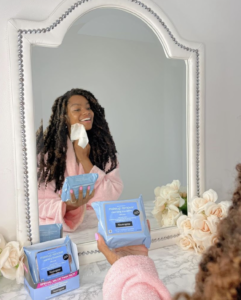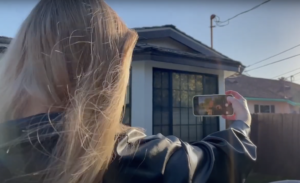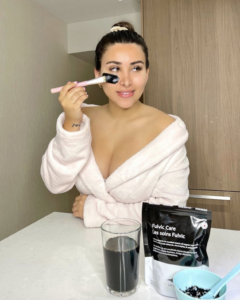By Liz Campos, Javien Sahaba, Bianca Sanchez and Natalie Sierra
Social media influencers are starting to speak up about pay disparities in their work.
Despite making up 84% of the industry, female influencers were paid 33% less compared to their male counterparts, according to a 2020 report by Klear.
A study by the SevenSix Agency shows 57% of influencers believe their ethnicity and race impacts the amount they are paid. One in five content creators think they’re paid less because of their ethnicity, and 69% believe they are being undercharged when discussing a paid partnership.
Now content creators are putting their concerns out into the open. Many have begun anonymously sharing allegations of pay discrimination and other negative experiences with brand deals to the Instagram page @influencerpaygap.
Additionally, a group of influencers of color shared an open letter addressing a marketing agency that discriminated against them. These, among other movements by influencers of color, have shone light on the racial pay gap that affects them.
This all matters because, as influencer Chazlyn Stunson put it, social media stars are modern day marketers.
However, it’s not always clear what kind of compensation is fair. In some cases, influencers agree to promote a brand if they’re allowed to keep the products they promote — like jewelry or cosmetics. But on other occasions, influencers like Stunson insist brands pay them for their posts.
“It’s a lot of work… We basically do it all ourselves,” Stunson said. “It’s a job and regular jobs get paid money and we should as well.”

Photo courtesy of Chazlyn Stunson
Influencer, and influencer marketing consultant Valerie Lozada, said a 30-second video could take eight to ten hours of work.
Stunson said unpaid or “gifted collaborations” are beneficial to influencers who are first starting and still building their portfolio. However, now that she has grown, Stunson is only accepting paid collaborations.
“[Brands] have the money to pay you and they should be paying you,” Stunson said.
She has found many brands are actually willing to pay if influencers insist on it.

Lozada said brands might prefer to pay an influencer over a model because they have more influence over everyday users of social media.
“It’s the power of social media, but also the power of being an organic person, just like a normal regular person that is using their products,” Lozada said.
Stunson believes one of the reasons brands like to do gifted collaborations instead of paid collaborations is because many of the influencers are young. She wants to clarify however, that influencers calculate how much their work is worth and hope brands understand that.
Lozada said that brands should work on how to approach influencers.
“Why would you ask someone to work for you for free,” Lozada said. “It’s just quite disrespectful sometimes.”

Photo courtesy of Valerie Lozada
Stunson believes race plays a part in the lack of pay to influencers of color.
Stunson, a Black woman, believes that if her content and the content of a white influencer were put side by side, Stunson feels she would receive different compensation.
Stunson also urged content creators of color to do due diligence on a brand to ensure they’re not a token influencer for a brand. Stunson said she will take note when a brand’s webpage features very few non-white faces.
“You have to make sure you’re working with brands that have your best interest,” Stunson said.
Paying the influencer could also better their content, Stunson said. It makes the creator excited to work with and collaborate with the brand.
Lozada has noticed an increase in brands working with influencers of color. However, it is noticeable when brands select influencers of color — and also influencers from the LGBTQ community — purely for diversity points. She said creators need to choose wisely is because they do not want to help insincere brands gain attention, especially if they are targeting influencers for their race, gender or sexual orientation.
For influencers to get paid, Lozada said there should be more transparency in the influencer community. However, influencers are often secretive, she said, and are just in the process of getting better pay, but if influencers speak out about how much they are getting paid, then they can continue to progress.
“I think that if we all were just more transparent about our fees, about our content creation time and all of those things,” Lozada said, “I feel like that would be so beneficial to all of us.”

 Tweet this Video
Tweet this Video Share on Facebook
Share on Facebook Share via E-mail
Share via E-mail

